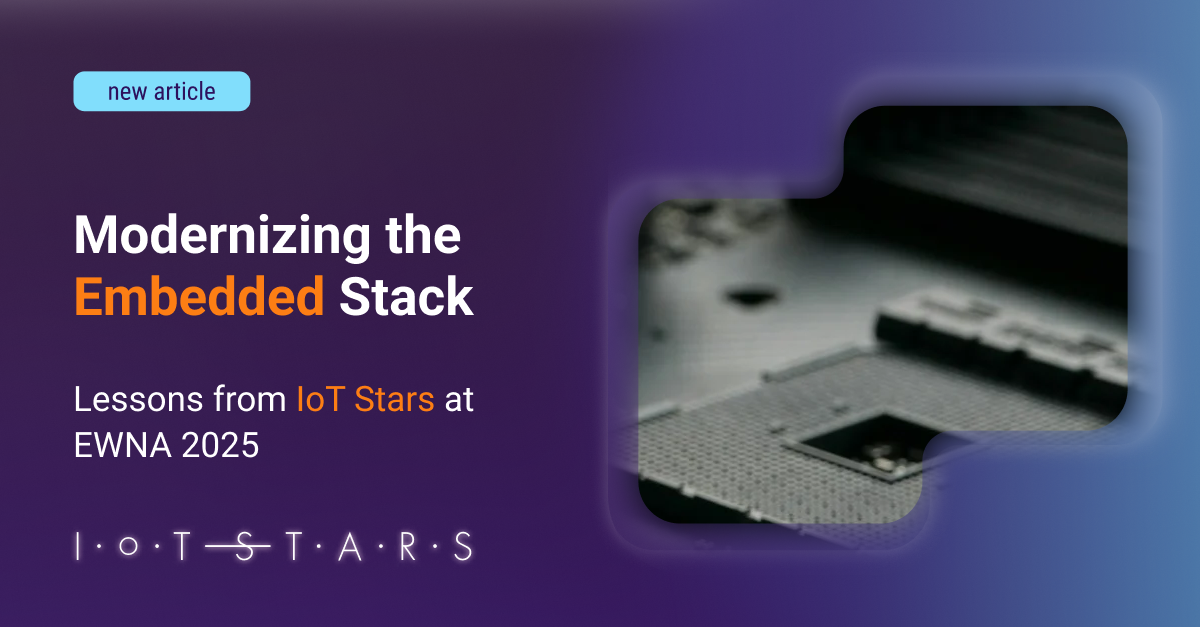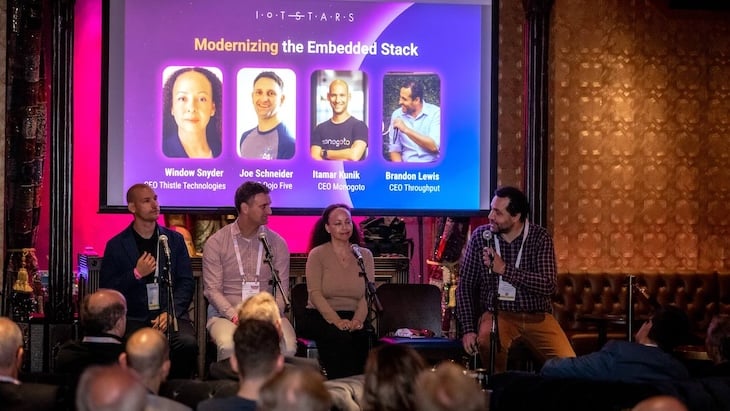Modernizing the Embedded Stack: Lessons from IoT Stars at Embedded World North America 2025

The landscape of IoT development is evolving rapidly, and staying ahead requires more than just technical know-how, it demands a strategic shift in how we approach building connected devices.
At the recent IoT Stars panel during Embedded World North America 2025, industry leaders shared critical insights on navigating this transformation. The session titled "Modernizing the Embedded Stack" brought together Window Snyder (Thistle Technologies), Joe Schneider (Dojo Five), and Itamar Kunik (Monogoto) to debate how to modernize the process of building connected devices.
Here are four key takeaways for IoT engineers looking to modernize their embedded stack.
1. The Learning Curve: Steep but Surmountable
The debate over the complexity of IoT development is nuanced. Joe Schneider stated that complexity is not going away. We will solve the complexity problems in today's products, yet tomorrow the market will demand more complexity in other fields.
Itamar Kunik argued that the barrier to entry has plummeted with tools like Raspberry Pi, and cloud platforms have lowered the barrier to entry for prototypes, yet scaling to production remains challenging. As customer demands for value increase, so does system complexity. However, Window Snyder and Joe Schneider recognized that ease of starting doesn't equate to ease of scaling. To succeed, don’t build everything from scratch, instead leverage existing projects by building on top of (open) frameworks.
2. Automation is Non-Negotiable
One of the critical pieces is automation. You need an automated build pipeline. So many people understand its value, but have difficulty putting it in place.
– Joe Schneider
Joe Schneider stated that the critical piece is automation. A modern embedded software stack relies heavily on automation. Implementing CI/CD pipelines and automated testing ensures repeatable, reliable releases, a necessity in today's fast-paced market. By automating routine tasks, engineers can focus on innovation and orchestration, rather than getting bogged down in manual processes.
3. Developer Experience Matters
We can talk freely about this: Developers don't like people. That's simply put. And I'm one, so I can say that. What is a developer approach? I would say that the playbook was written by AWS, by Twilio, by Stripe. That is open documentation. Everything is written. You have webinars, you have blog posts, you have tools, you have use cases and examples.
– Itamar Kunik
Itamar Kunik pointed out that modern engineers demand self-service documentation and tools that offer transparency and control from day one. The "Stripe or Twilio" model applied to IoT means having immediate access to observability features like firewalls and real-time auditing. Don't settle for opaque connectivity; demand tools that empower you to monitor and manage your device's network behavior effectively.

Panelists: Itamar Kunik, Joe Schneider, Window Snyder, Brandon Lewis (Moderator)
4. Security Starts with Updates
What defines a modern security stack starts from the middle, which is update. And by update I mean an update mechanism that you're actually willing to use. That is the foundation for everything else that you need to do on the device. If you don't have an update mechanism that you're willing to actually ship an update with and you don't have anything... because when you identify a security issue, you can't fix it with confidence.
– Window Snyder
Window Snyder established a golden rule: if you cannot reliably update a device, you have no security. A robust, fail-safe update mechanism is the bedrock of IoT security. Without the ability to reliably patch devices, vulnerabilities cannot be addressed, leaving your fleet exposed. Prioritize building a secure update infrastructure early in the development cycle to ensure long-term resilience.
Conclusion From "Working" to "Maintainable"
Ultimately, the panel concluded that modernizing the embedded stack is about moving from "making it work" to "making it maintainable." Success isn't just a connected device; it is a device that can be updated reliably, monitored in real-time, and secured by design. By embracing automation, demanding better developer tools, and prioritizing update infrastructure over feature bloat, IoT engineers can overcome the rising complexity of the edge and build products that survive the test of scale.